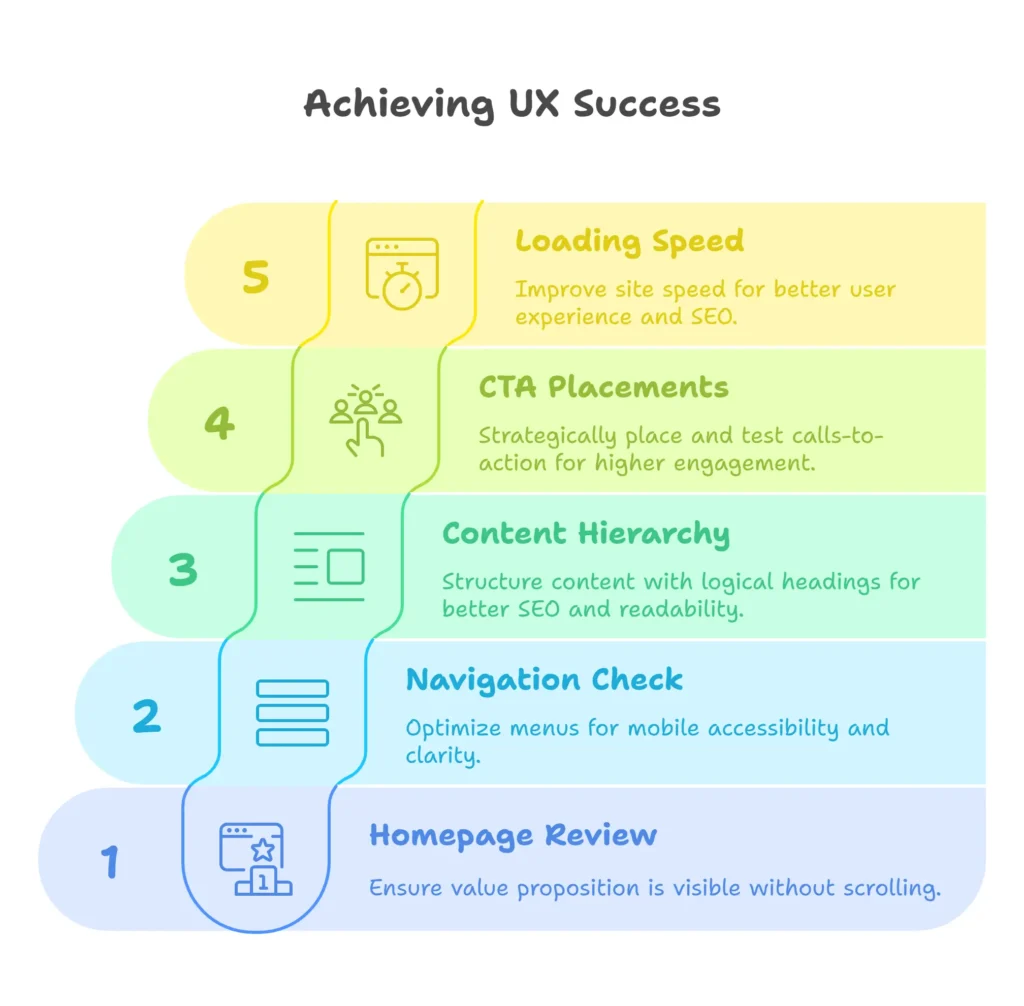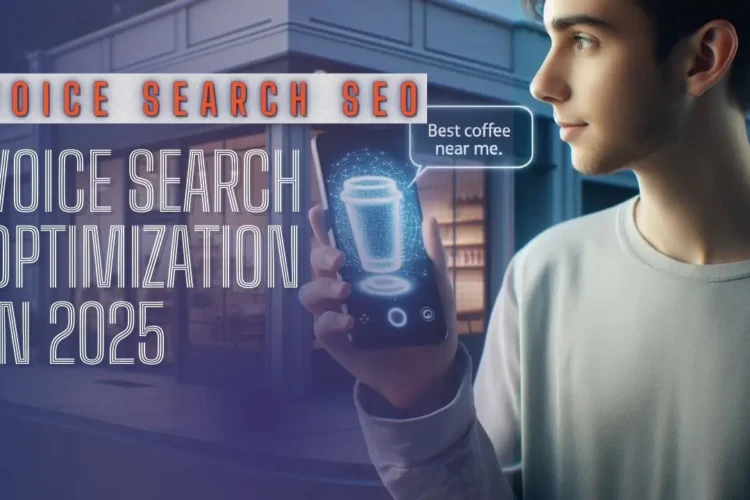

In the digital landscape where attention spans are short, the difference between a user bouncing off your site and converting into a paying customer lies in how your website feels. That feeling is shaped by UX/UI. UX UI design business success is no longer optional; it’s at the core of turning traffic into results. And here’s the catch – the bounce-rate trap most businesses fall into often comes down to a frustrating user interface or a confusing layout. A poor experience leads to higher exits and lower trust. But when UX and UI are executed well, you gain more than conversions – you build brand confidence, better search rankings, and long-term growth.
UX/UI Design: What It Means for Business Websites
Understanding the Foundation of UX/UI
UX (User Experience) refers to how a user interacts with your site, from navigation to clarity of actions. UI (User Interface) is the visual side – colors, buttons, and layout. The harmony between them is what creates UX UI design business success. A seamless flow of content, strong call-to-actions (CTAs), and intuitive navigation all work together to make users stay and act.
Many business owners believe good content is enough, but even the best content fails if users can’t access it properly. That’s where design comes in. In fact, Google considers UX signals like Core Web Vitals when ranking your site.
How Poor UX/UI Affects Customer Trust and Retention
First impressions online are shaped within milliseconds. If your website looks outdated, cluttered, or is hard to use on a phone, users won’t trust your brand. Broken design patterns and lack of structure tell visitors you’re not professional. On the other hand, intuitive flow, quick loading, and brand-aligned visuals send strong trust signals.
A better UX doesn’t just retain users longer – it makes them come back and recommend you.
UX/UI Design and Its Influence on Conversion Rates
UX UI design business success through higher conversions
Businesses with optimized interfaces enjoy up to 200% more conversions than poorly designed ones. The reason? Design helps eliminate friction. Good UI guides the user naturally toward CTAs without overwhelming them.
From button placement and color contrast to micro-interactions like loading animations or feedback after a form submission, every detail supports the goal.
Improving layout hierarchy can increase form completions, reduce cart abandonment, and generate more leads.
The SEO Benefits of Smart UX/UI Design
UX UI SEO impact on ranking and organic visibility
Google’s search algorithm now places user satisfaction at the heart of its ranking signals. UX UI design business success is directly tied to how your design influences page experience metrics. If users land on your site and quickly leave, it signals to Google that your content isn’t meeting their expectations — reducing your chances of ranking.
Clean navigation structures, easy-to-read content blocks, and strategic internal linking not only improve user interaction but also help search engines crawl your site more efficiently.
Example: A service website with a well-organized FAQ section and breadcrumb navigation sees better engagement metrics and improved sitelink visibility in SERPs.
- Reduced bounce rate = better credibility: A user who stays longer is more likely to engage and convert. UX that keeps users interacting (scrolling, clicking) sends quality signals to search engines.
- Semantic structure and accessibility: Proper use of headings (H1–H4), ARIA labels, and contrast ratios doesn’t just help users — it enhances crawlability and indexing.
- Contextual CTAs and micro-interactions: Smart placement of CTAs boosts conversions and reduces pogo-sticking behavior, which positively impacts your ranking.
Mobile-first indexing and UX UI SEO impact
Since Google now prioritizes mobile versions for indexing, mobile UX best practices directly impact your site’s visibility. If your mobile layout fails — due to elements being too close, slow speed, or unresponsive content — your desktop rankings suffer too.
Ensuring your UX UI design business success includes mobile testing is non-negotiable. A seamless mobile interface reassures both users and Google that your content is future-ready.
Example: A local service business that optimized its mobile navigation with thumb-friendly menus and fast-loading pages saw a 40% boost in mobile keyword rankings.
- Touch-friendly design = better engagement: Google tests for mobile usability. Menus, buttons, and links must be spaced well for fingers — not cursors.
- Cumulative Layout Shift (CLS) and speed fixes: Minimize layout shift on mobile by defining image sizes and avoiding injected content. A stable visual experience is key to UX UI SEO impact.
- Mobile content parity: Make sure your mobile version includes all critical content that appears on desktop — truncated or missing content hurts both experience and ranking.
Mobile UX Best Practices That Drive Real Results

Mobile UX best practices to enhance engagement
Over 70% of website traffic in India and the UAE comes from mobile. Ignoring mobile design is no longer feasible. Applying mobile UX best practices ensures visitors aren’t lost due to zooming, slow loading, or misaligned content.
Quick tips to master mobile UX:
- Use larger touch targets for buttons
- Keep forms short with auto-fill options
- Design thumb-friendly navigation (bottom bar or hamburger menu)
- Avoid pop-ups that block content
Step-by-Step DIY UX Walkthrough for Business Owners
You don’t need to be a UX/UI professional to evaluate your own website. This quick, focused walkthrough helps uncover the hidden barriers affecting your UX UI design business success—especially on mobile devices.
1. Homepage Review: Is your value proposition visible above the fold?
Your headline, service benefits, or product value should be seen instantly without scrolling. Users decide within seconds whether to stay—don’t hide what matters most.
Example: A cleaning service website with the headline “Book a Cleaner in 60 Seconds” + CTA visible immediately performs better than a generic welcome message.
2. Navigation Check: Are menus clear and accessible on mobile?
Avoid overloading your top menu. Group related items under dropdowns and make sure mobile menus are thumb-friendly with adequate spacing.
Example: A hamburger menu with a sticky bottom nav (Home, Services, Contact) boosts retention on smaller screens.
3. Content Hierarchy: Are H1, H2s used logically?
Proper heading structure improves UX UI SEO impact and scannability. Use H1 once for the main page topic, H2 for major sections, and H3 for subtopics. This helps Google index your site better and helps users read easily.
4. CTA Placements: Are buttons easy to find and click?
Your calls-to-action (like “Book a Demo” or “Get Quote”) should stand out visually and appear multiple times—especially after key information or sections.
Tip: Use a contrasting color for CTAs and test different text like “Try Free” vs “Learn More” to see what gets more clicks.
5. Loading Speed: Use PageSpeed Insights for recommendations
Slow sites lead to exits. Run your site on Google PageSpeed Insights and aim for a mobile score above 85. Compress images, use lazy loading, and remove unused plugins or scripts.
UX UI design business success is directly tied to loading time—Google uses this as a core ranking signal, especially for mobile-first indexing.
This walkthrough helps uncover common friction points that lower engagement and SEO rankings. Even small improvements in layout, speed, or clarity can lead to measurable lifts in conversion and search performance.

UX Audit Checklist for Business Success
Use this 15-point checklist for a quick internal review:
- ☑ Clear call-to-action on homepage
- ☑ Load time < 3 seconds
- ☑ Mobile responsive layouts
- ☑ Consistent typography & branding
- ☑ Logical information hierarchy
- ☑ Accessible color contrast
- ☑ Interactive feedback (e.g., form validation)
- ☑ Minimal pop-ups
- ☑ Breadcrumb navigation (if multi-page)
- ☑ Clickable phone/email
- ☑ Optimized for local SEO (if applicable)
- ☑ Optimized image sizes
- ☑ Functional buttons/links
- ☑ Scrollable content on smaller screens
- ☑ Alt tags and structured data for SEO
This audit alone can reveal gaps affecting your UX UI design business success.
Quick Wins to Convert More Visitors With Design
Sometimes, even small design changes can make a huge difference:
- Rewriting CTA text to be more action-oriented
- Using real imagery vs stock visuals
- Improving line spacing and white space
- Adding testimonials next to forms (trust signal)
These are simple fixes, yet they drive massive results.
FAQ
What is the biggest reason businesses fail at UX/UI?
They design for looks rather than usability. A pretty design that confuses users doesn’t help anyone.
How does UX/UI help my site rank better?
Improved UX leads to lower bounce rates, longer time on page, and better mobile performance. These are ranking factors.
I already have a responsive site. Isn’t that enough?
Responsiveness is just one piece. You still need usability, clarity, and conversion-focused design elements.
How can I evaluate my website UX without hiring an agency?
Use our DIY walkthrough above or run a full audit with free tools like Hotjar, Google Analytics, and Lighthouse.



